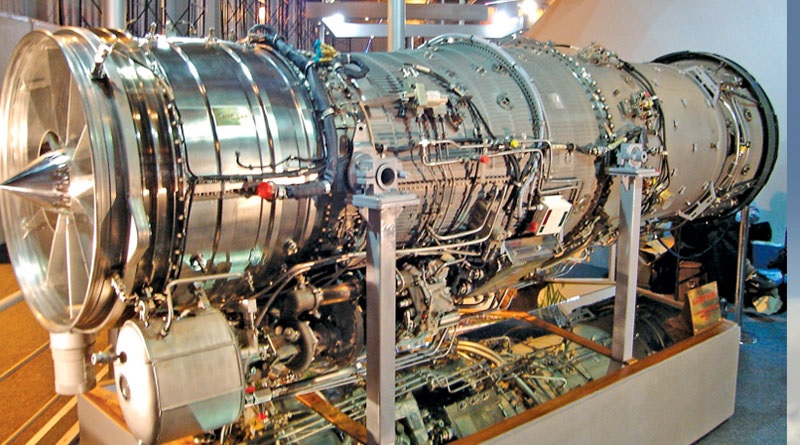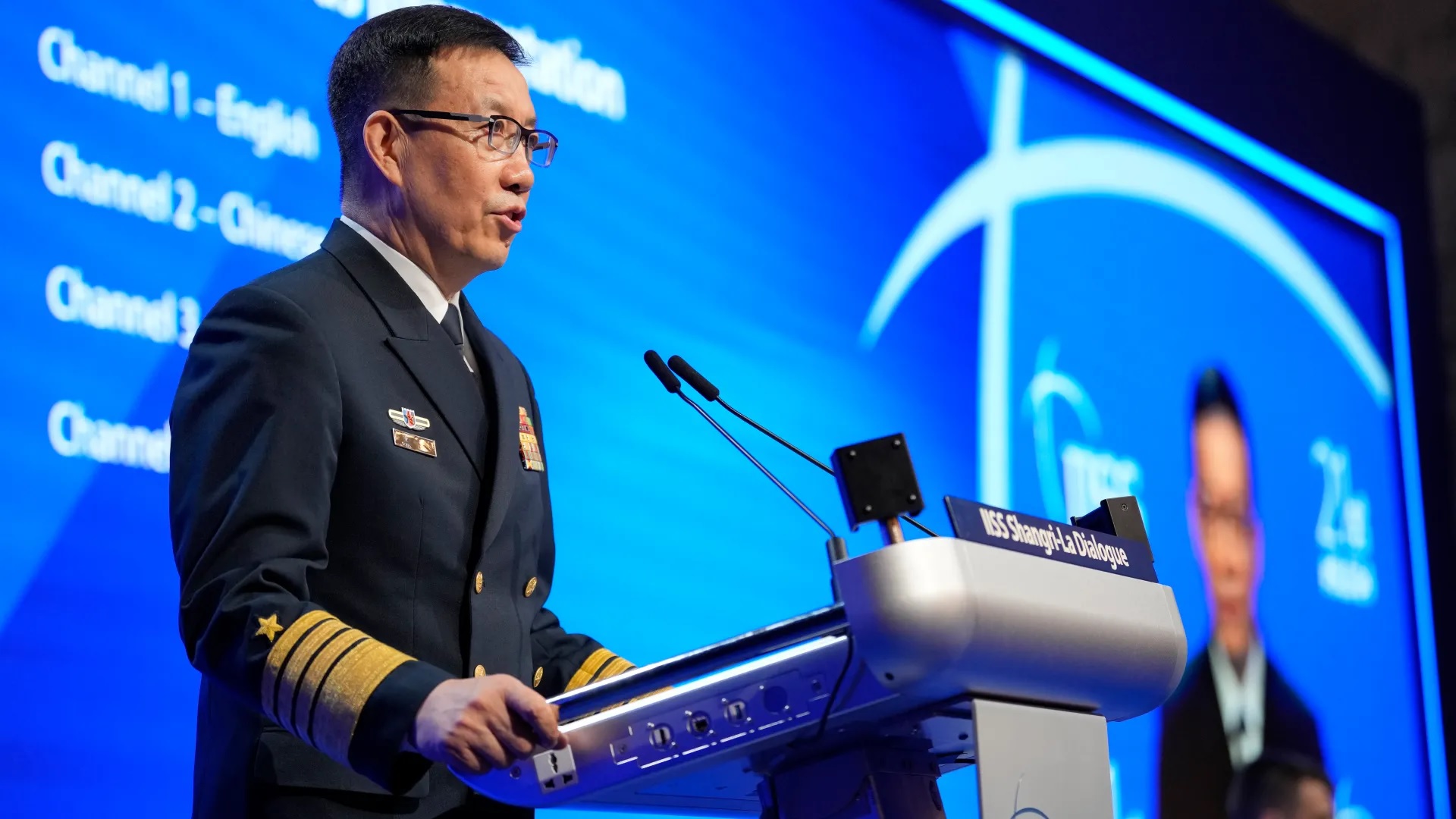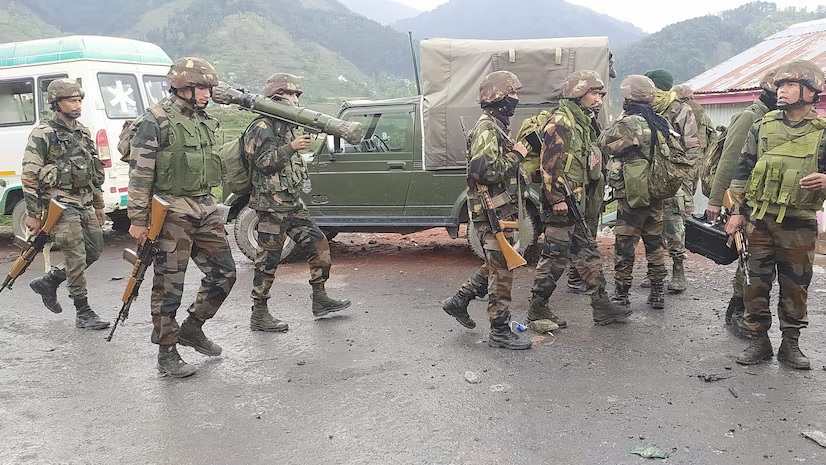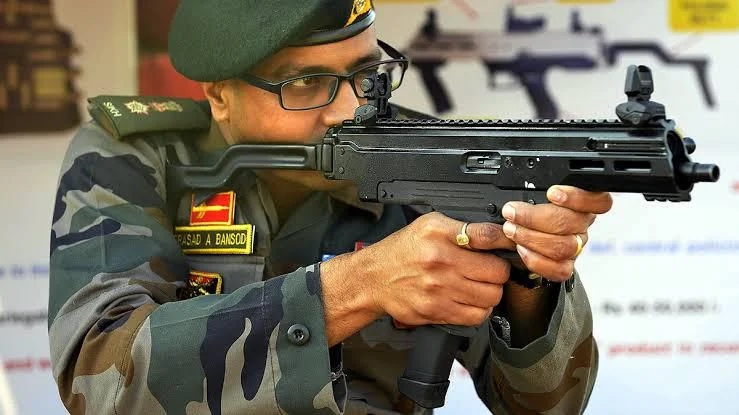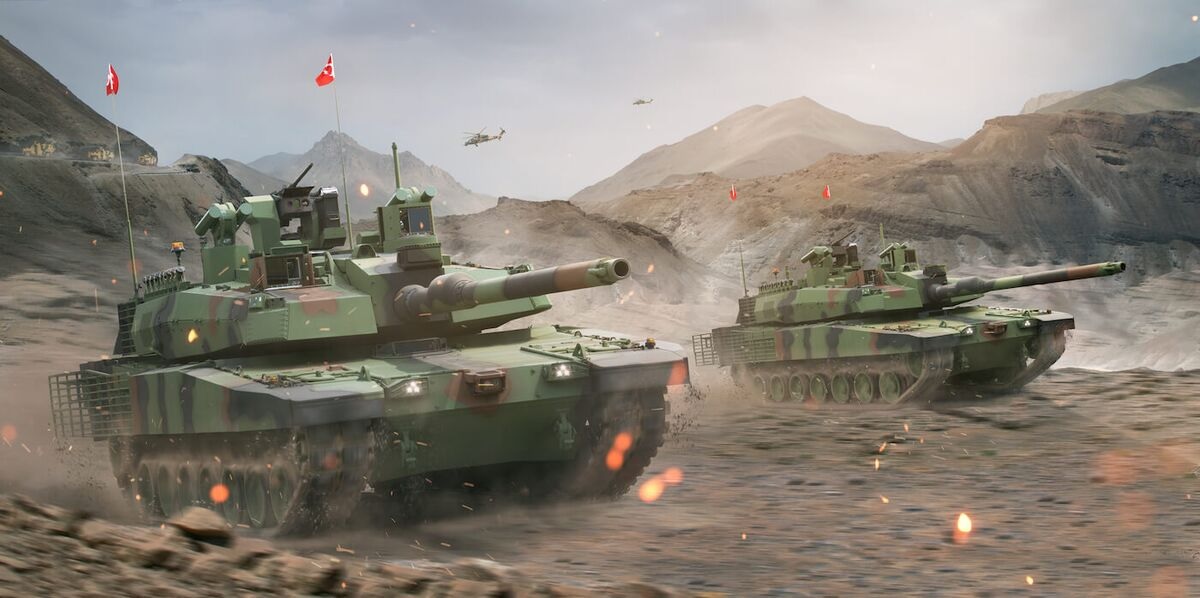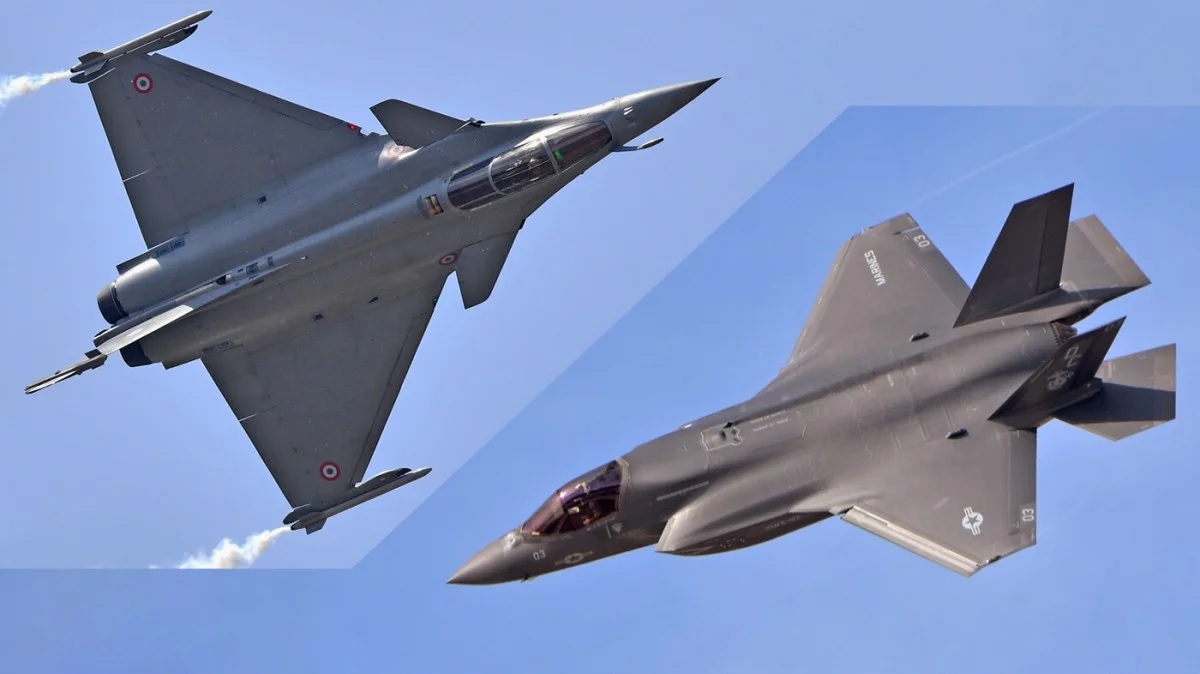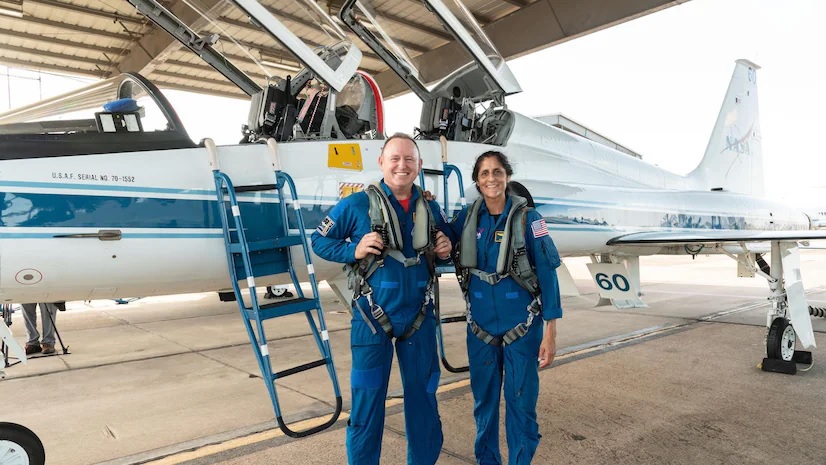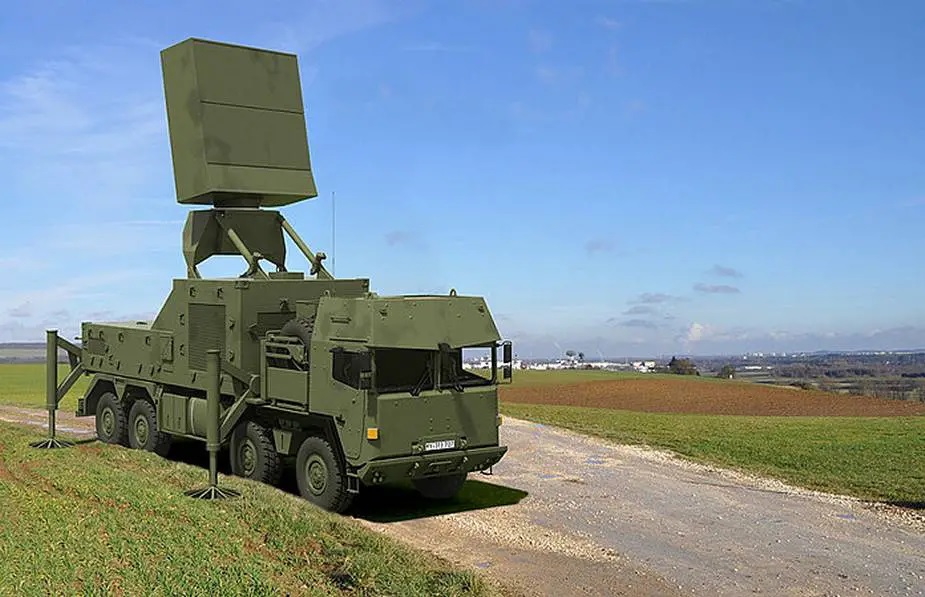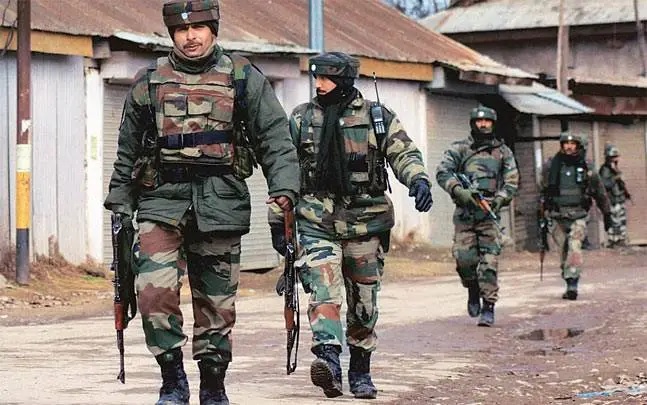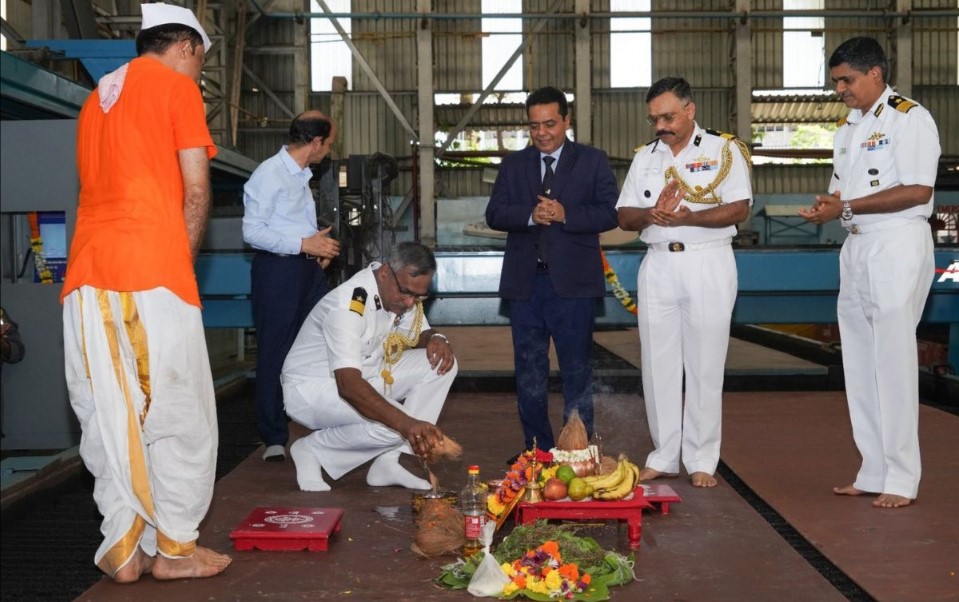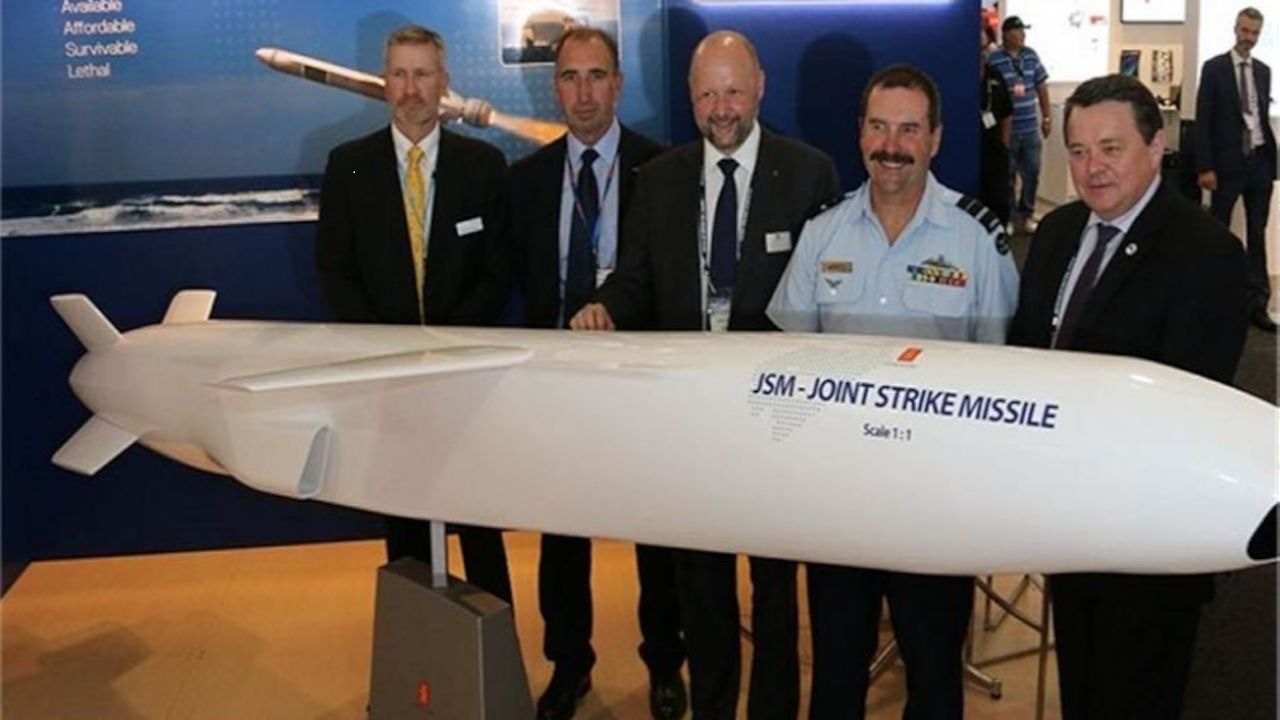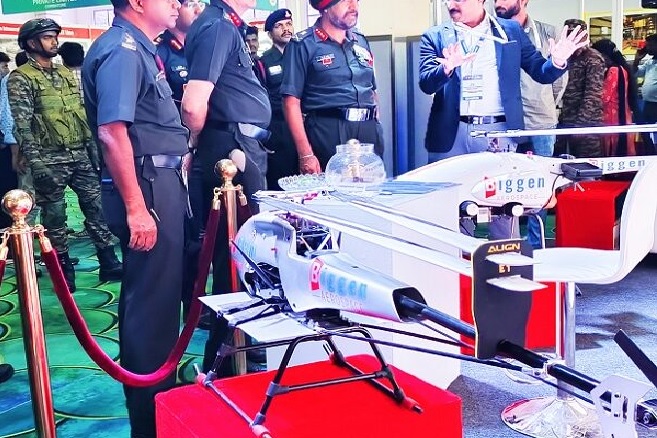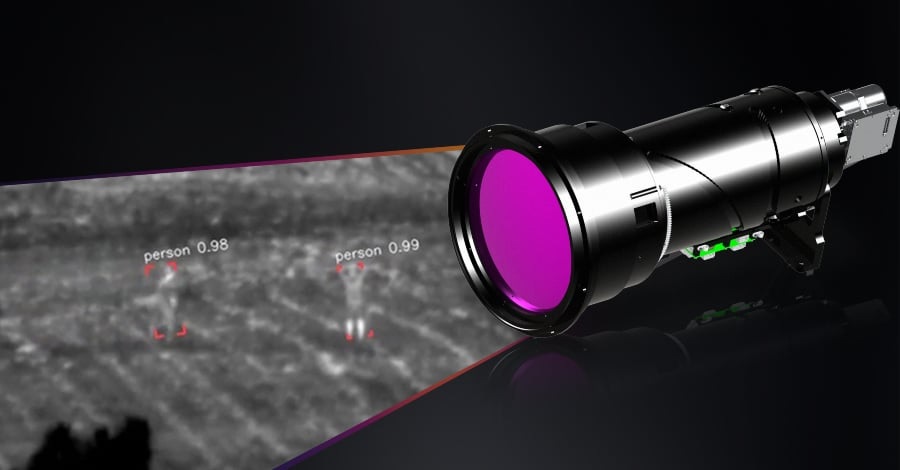India
India's GTRE, part of DRDO, has advanced its Dry Kaveri engine program, aiming for self-reliance in fighter jet technology with upcoming rigorous tests and potential integration into the LCA-Tejas Mk1 aircraft.The Gas Turbine Research Establishment (GTRE), a division of India's Defence Research and Development Organisation (DRDO), has made significant progress in developing the Dry Kaveri engine. This milestone is crucial for India's goal of self-reliance in critical aerospace technology. The Dry Kaveri engine, under development for several years, has now entered a phase of rigorous testing and certification.The GTRE plans to integrate an afterburner into the engine, which will enhance its thrust capabilities. This modified engine will be installed in an older Limited Series Production (LSP) LCA-Tejas Mk1 aircraft for essential flight testing. These trials, expected to start within the next two years, will focus on validating the engine's ability to generate 73 kilonewtons (kN) of thrust. Achieving this thrust level is a significant milestone for the DRDO.The long-term goal of the Dry Kaveri engine program is to develop a 90kN class engine. This engine could replace the F-404 engine currently powering the Tejas Mk1A fighter jets. If successful, it would reduce India's dependence on foreign suppliers for critical fighter jet components, marking a major breakthrough for the country's defense capabilities.The development of the Dry Kaveri engine has faced delays in the past, but recent advancements suggest the project is gaining momentum. The DRDO aims to use this engine as a viable alternative when the Tejas Mk1A fleet undergoes future engine upgrades, provided it meets the necessary performance and safety standards during flight trials.The LCA-Tejas Mk1, an indigenously developed light combat aircraft, is a cornerstone of India's efforts to modernize its air force. Integrating the Dry Kaveri engine into the Tejas Mk1A represents a strategic move to bolster the country's defense manufacturing sector.Developing a domestic engine like the Dry Kaveri also aligns with the Indian government's 'Make in India' initiative, which aims to encourage local production and reduce reliance on imports. Successful implementation of this engine would not only enhance the performance of India's fighter jets but also signify a major achievement in India's aerospace engineering capabilities.As the flight trials approach, the aerospace community will closely monitor the progress of the Dry Kaveri engine. If the engine meets the rigorous standards required, it will pave the way for future advancements in India's indigenous fighter jet programs.
Read More → Posted on 2024-06-02 15:20:33World
Chinese Defence Minister warns against Taiwan independence, calls for US cooperation; tensions persist amid diplomatic efforts.Chinese Defence Minister Dong Jun issued a stern warning about Taiwan independence at the Shangri-La Dialogue in Singapore, declaring that China’s military is prepared to act decisively to prevent any moves towards Taiwan’s independence. At the same time, he emphasized the importance of increased communication and cooperation between China and the United States.During the annual security forum, which gathers defence officials worldwide and reflects the state of US-China relations, Dong highlighted the necessity of dialogue. “We have always been open to exchanges and cooperation, but this requires both sides to meet each other halfway,” Dong stated, underlining the need for more interactions between the two militaries due to existing differences.High-Level Meetings and CommunicationDong's remarks came after his meeting with US Defense Secretary Lloyd Austin. The one-hour discussion, the first substantive face-to-face talks in 18 months between the defence chiefs, occurred in the backdrop of recent military tensions. Both sides showed a willingness to stabilize relations, with Austin announcing the resumption of telephone conversations between US and Chinese military commanders "in the coming months."Taiwan TensionsDong’s comments also followed China’s military drills around Taiwan and threats of war after President Lai Ching-te's inauguration, whom Beijing labels a "dangerous separatist." Reiterating China's stance, Dong said, "The Chinese People's Liberation Army has always been an indestructible and powerful force in defence of the unification of the motherland, and it will act resolutely and forcefully at all times to curb the independence of Taiwan."Recent Diplomatic EffortsThe Biden administration has increased efforts to ease tensions with China. Secretary of State Antony Blinken visited Beijing and Shanghai last month, marking a step towards improved diplomatic relations. A key focus of these efforts is resuming military-to-military dialogue to prevent conflicts from escalating.In 2022, China cut military communications with the US in response to then-House Speaker Nancy Pelosi’s visit to Taiwan. Tensions were further heightened by an incident involving an alleged Chinese spy balloon over US airspace, and a meeting between Taiwan's then-president Tsai Ing-wen and current House Speaker Kevin McCarthy. Additionally, China's frustration grew over the US's deepening defence ties in the Asia-Pacific region, especially with the Philippines, and the regular deployment of American military assets in the Taiwan Strait and South China Sea, which Beijing perceives as containment efforts.Moving ForwardDespite these challenges, both nations are taking steps to manage their rivalry responsibly. Following a summit between President Joe Biden and Chinese leader Xi Jinping in November, they agreed to restart high-level military talks. These discussions are expected to cover military operations near Taiwan, Japan, and the South China Sea, aiming to reduce the risk of conflict.In summary, while China maintains a firm stance against Taiwan’s independence, it also seeks more robust communication channels with the United States to manage their complex relationship. The recent high-level meetings and planned resumption of military dialogue indicate a cautious but hopeful approach towards easing bilateral tensions.
Read More → Posted on 2024-06-02 15:15:33World
MBDA will introduce the RCM², a versatile weapon system for kinetic and electromagnetic operations, at ILA Berlin 2024. The system enhances mission success in contested environments with its adaptable and loitering capabilities.MBDA, a leading European defense company, is set to unveil its latest innovation, the RCM² (Remote Carrier Multidomain Multirole Effector) weapon system, at the ILA Berlin Air Show 2024. The event, which will take place from June 5 to June 9, marks the first public presentation of the RCM².Key Features of the RCM²Developed in Germany, the RCM² is designed to enhance mission success in contested environments. It is versatile, capable of handling both kinetic (physical) and electromagnetic operations, making it suitable for a wide range of military missions. Key features include:Adaptability: The RCM² can be used for both short and long-range engagements.Loitering Capability: The system can remain airborne for extended periods, allowing for continuous monitoring and rapid response.GPS-Denied Operation: The RCM² can operate effectively in environments where GPS signals are unavailable or jammed.Interactive Command Transfer: Networked operators can seamlessly transfer command of the system, ensuring flexibility and coordination.Multi-Domain Launch and Control: The RCM² can be launched from various platforms and controlled across different domains, supporting joint force operations.Real-Time Data: It performs sensor-based reconnaissance and provides real-time situational data, crucial for modern military operations.Collaboration and DevelopmentThe RCM² is part of the Next Generation Weapon System within the Future Combat Air System (FCAS) program. MBDA collaborates with the Spanish company SATNUS to drive technological advancements in remote carriers. This partnership aims to develop cutting-edge capabilities that enhance the effectiveness of future military operations.MBDA at ILA 2024At ILA 2024, MBDA will showcase around 50 high-tech systems through models, product demonstrations, and virtual reality displays. These exhibits will highlight the company's broad range of defense solutions and technological innovations.MBDA's subsidiaries, Bayern-Chemie and TDW, along with the joint venture COMLOG, will also participate in the event. They will present their latest advancements and contributions to the defense sector.About MBDAMBDA is a prominent European multinational defense group with over 15,000 employees. The company specializes in developing and producing complex weapon systems, ensuring the defense capabilities of France, Germany, Italy, Spain, the United Kingdom, and allied countries. MBDA is jointly owned by Airbus (37.5%), BAE Systems (37.5%), and Leonardo (25%).The introduction of the RCM² at ILA Berlin 2024 underscores MBDA's commitment to innovation and its role in advancing modern defense technology. The system's advanced capabilities are expected to significantly enhance the effectiveness and flexibility of military operations in various environments.
Read More → Posted on 2024-06-02 15:11:13India
Indian security forces face ongoing challenges from terrorist infiltration and drone smuggling along the Line of Control in Jammu and Kashmir.The security situation along the Line of Control (LoC) in Jammu and Kashmir remains tense, with 60 to 70 terrorists reportedly active on launch pads, ready to infiltrate into Indian territory. Despite a decrease in their capabilities, Pakistan continues to send men and materials across the border. This information was shared by Rashmi Ranjan Swain, Director General of Police (DGP) for Jammu and Kashmir, who also oversees the Criminal Investigation Department (CID).In an interview with PTI, DGP Swain emphasized that the enemy’s intent to destabilize the region persists, even though their operational capabilities have been somewhat degraded. He highlighted the presence of foreign terrorists from Pakistan actively operating within the region. Swain noted that despite some successes in thwarting these infiltration attempts, ongoing efforts are essential to further diminish the enemy’s ability to cause unrest.Swain pointed out that at any given time, small groups of terrorists, typically consisting of five to six individuals, are positioned at various locations along the LoC, waiting to cross into Indian territory. He assured that the combined efforts of the Army, paramilitary forces, and Jammu and Kashmir Police are resolute in making it extremely difficult for these adversaries to succeed.Drone Threats and CountermeasuresOne significant challenge mentioned by Swain is the use of drones by adversaries to smuggle arms, ammunition, explosives, cash, and narcotics into Jammu and Kashmir. This method of infiltration poses a considerable threat, complicating the security landscape. While progress has been made in countering drone activities, the DGP stressed the need for sustained vigilance and ongoing efforts to fully eradicate these threats.The security forces have been working diligently to intercept and neutralize drone droppings, but Swain acknowledged that completely stopping these activities requires more time and concerted effort. He highlighted that in the case of narcotics, reversing the cycle of smuggling and distribution is a significant challenge that demands persistent efforts.Collaborative Efforts for Enhanced SecuritySwain underscored the importance of collaborative efforts among the various security agencies in the region. He praised the coordinated actions of the police, Army, and paramilitary forces, which are crucial in ensuring the safety and stability of the border areas. The collective resolve of these agencies aims to make it increasingly challenging for adversaries to carry out their disruptive activities.In summary, the security situation in Jammu and Kashmir remains complex, with ongoing threats from both terrorist infiltration and drone-based smuggling. However, the steadfast commitment of Indian security forces to counter these challenges is evident. Through continued vigilance and collaborative efforts, the security agencies aim to protect the region from destabilizing forces and maintain peace and stability.
Read More → Posted on 2024-06-02 15:06:02India
Lokesh Machines Limited has secured a ₹42.6 million contract from the Indian Army for the supply of ASMI submachine guns, marking a significant boost for India's domestic defence manufacturing sector.In a significant development for India's defence manufacturing sector, Lokesh Machines Limited has secured a contract worth ₹42.6 million (approximately USD 515,000) from the Indian Army's Northern Command. This contract involves supplying 9x19mm ASMI submachine guns with accessories, and the order is expected to be fulfilled by September 28, 2024.About Lokesh Machines LimitedEstablished in 1983, Lokesh Machines Limited is a prominent Indian manufacturer specializing in special-purpose machines (SPM), general-purpose machines/CNC lathes (GPM), connecting rods, and machining of cylinder blocks and heads. The company operates through two main divisions:1. Machines Division: Focuses on manufacturing various types of machinery.2. Component Division: Specializes in the production of components like connecting rods and cylinder blocks.Financial PerformanceThe announcement of the contract had a positive impact on the company’s stock, which closed at ₹408.30 per share, resulting in a market capitalization of ₹755.22 crore. Over the past year, the stock has delivered a remarkable return of approximately 185%.As of March 2024, the company's shareholding structure includes:Promoters: 50.76%Foreign Institutional Investors (FIIs): 0.27%Public: 48.98%In Q4 FY24, Lokesh Machines Limited reported revenue of ₹80.34 crore and a net profit of ₹4.69 crore. For the entire fiscal year FY24, the company’s revenue reached ₹294 crore, with a net profit of ₹14 crore, an increase from the ₹10 crore net profit recorded in the previous year.About the ASMI Submachine GunThe ASMI submachine gun is the first indigenous small arm ordered by the Indian Army since the INSAS rifle. It was designed by Colonel Prasad Bansod from the Infantry School in Mhow, with support from the Defence Research and Development Organisation (DRDO). The ASMI, meaning pride and self-respect, is a 9x19mm caliber weapon designed for close-quarter combat, offering enhanced mobility and firepower to the troops.Industry ImpactThis contract is a major boost for Lokesh Machines Limited and reflects the Indian government's push towards self-reliance in defence manufacturing. The successful fulfillment of this order could pave the way for more such contracts in the future, enhancing the company's reputation and financial standing.Future ProspectsWith the Indian government focusing on increasing domestic production of defence equipment, companies like Lokesh Machines Limited are well-positioned to benefit from new opportunities. The company's robust financial performance and strategic contracts like the one with the Indian Army are likely to contribute to its growth trajectory.ConclusionThe awarding of the ₹42.6 million contract to Lokesh Machines Limited by the Indian Army underscores the potential of India's domestic defence manufacturing sector. This achievement not only highlights the capabilities of Lokesh Machines but also marks a step forward in the country's journey towards self-reliance in defence production.DisclaimerThis article is for informational purposes only and should not be considered financial advice. Readers are encouraged to conduct their own research before making any investment decisions.
Read More → Posted on 2024-06-02 15:02:27World
Türkiye has started serial production of the Altay MBT, enhancing its military strength with advanced, domestically produced technology. This milestone aims to meet the modern requirements of the Turkish Land Forces and attract international interest.Türkiye has officially started the serial production of the Altay main battle tank (MBT) following a contract finalized on May 29, 2024. This contract marks a major milestone for Türkiye's defense industry, demonstrating the country's commitment to strengthening its military capabilities with domestically produced technology.The Turkish Defence Industry Agency (SSB) announced the contract, which covers several critical components. These include the establishment of a production line for the Altay MBT, the development and supply of subsystems, and the sourcing of a domestic powerpack—comprising the engine and transmission system. This step is expected to enhance Türkiye's self-reliance in defense manufacturing and reduce dependence on foreign technology.Key Features of the Altay MBTThe Altay MBT is designed to meet the modern requirements of the Turkish Land Forces. It incorporates the latest advancements in military technology, including:120 mm Smoothbore Gun: This main armament ensures superior firepower.Advanced Fire Control Systems: These systems enhance targeting accuracy and efficiency.Composite Armor: Provides enhanced protection against various threats.Mobility: The tank is engineered for high mobility in diverse combat scenarios.The powerpack solution is a notable aspect of the contract. Developing and producing the engine and transmission system domestically will significantly boost the tank's performance and operational readiness.Production and International InterestThe serial production will begin with setting up a dedicated production line. Initially, the focus will be on producing a specific number of units to meet the immediate needs of the Turkish Land Forces. Over time, production is expected to scale up, potentially leading to exports to international partners.Haluk Görgün, President of the SSB, highlighted the global interest in the Altay project. Negotiations with several international partners are ongoing, indicating the tank's potential as a significant addition to global defense arsenals.Enhancing Türkiye's Defense CapabilitiesThe production of the Altay MBT is part of Türkiye’s broader efforts to modernize its military. By investing in advanced technology and enhancing domestic production capabilities, Türkiye aims to strengthen its defense infrastructure and improve operational readiness.The Altay MBT project is expected to pave the way for further advancements in Türkiye’s defense industry. The expertise gained from this project will likely contribute to the development and production of more advanced military platforms in the future. This project demonstrates Türkiye’s growing capabilities in defense technology and its commitment to maintaining a robust and independent defense sector.Future ProspectsAs Türkiye continues to develop and produce the Altay MBT, it is positioning itself as a significant player in the global defense industry. The tank's advanced features and domestic production capability are set to enhance Türkiye's military strength and provide a competitive edge in international defense markets.The success of the Altay MBT will not only bolster Türkiye’s defense capabilities but also contribute to the country's economic growth through potential defense exports. This project underscores Türkiye’s dedication to building a self-sufficient and technologically advanced defense industry.
Read More → Posted on 2024-06-02 14:55:03India
Pakistan on Friday refused to share details on any consular access to the two Indian nationals held in the neighbouring country on accusations of spyingOn Friday, Pakistan declined to provide detailed information about consular access to two Indian nationals held on spying charges, only acknowledging that such access has been granted periodically. Foreign Office spokesperson Mumtaz Zahra Baloch responded to inquiries about consular access to the two Indian prisoners, emphasizing that such arrangements have been made "from time to time."According to The Express Tribune, Pakistani authorities recently allowed Indian diplomats to meet with the two accused individuals, identified as Feroze Lone, 29, and Noor Muhammad Wani, 24. The two men, who hail from the Gurez area of Jammu and Kashmir, were arrested in 2020 in Gilgit-Baltistan, a region in Pakistan-administered Kashmir. Pakistani reports claim they were involved in espionage activities.The consular meeting took place at Adiala Jail, where a three-member delegation from the Indian High Commission in Islamabad met with the prisoners. Interior Ministry officers were also present during the meeting. Indian sources reported that Lone and Wani had been missing since November 2018, and it was believed they had crossed into Pakistan illegally before being detained on charges of spying.The issue of consular access between India and Pakistan has a contentious history. One notable case is that of Kulbhushan Jadhav, an Indian national arrested by Pakistan in 2016 and sentenced to death by a military court for espionage and terrorism. Despite India's repeated requests, Pakistan initially denied consular access to Jadhav. India took the case to the International Court of Justice (ICJ), which ruled in favor of India. The ICJ directed Pakistan to grant consular access to Jadhav, annul his death sentence, and conduct a civilian trial. Following the ICJ's order, Indian officials were finally allowed to meet Jadhav under strict security at the Pakistan Foreign Office in Islamabad.Consular access is a crucial aspect of international relations and diplomatic protocols, as it allows countries to provide support to their nationals detained abroad. The Vienna Convention on Consular Relations outlines the rights of consular access and assistance, aiming to ensure fair treatment and legal representation for detainees. In cases involving allegations of espionage, the provision of consular access becomes even more critical, given the sensitive nature of the charges and the potential for diplomatic tensions.The recent consular access granted to Feroze Lone and Noor Muhammad Wani indicates a willingness on both sides to adhere to diplomatic norms, despite ongoing political and military tensions between India and Pakistan. While Pakistan's refusal to divulge detailed information on consular communications keeps certain aspects of the situation opaque, the acknowledgment of such access suggests a degree of compliance with international diplomatic standards.For further context, Gilgit-Baltistan, where Lone and Wani were arrested, is a region of strategic importance. It is part of the larger Kashmir conflict, which has been a flashpoint between India and Pakistan since their independence in 1947. Both countries claim the entire region but control only parts of it. The geopolitical significance of the area adds another layer of complexity to cases of alleged espionage.As India and Pakistan navigate their diplomatic relationship, cases like these highlight the delicate balance of maintaining national security while adhering to international legal obligations. The provision of consular access, though sporadic, is a step towards upholding the rights of detainees and managing bilateral relations in a highly charged environment.
Read More → Posted on 2024-06-02 14:49:03World
Missing journalist Ahmed Farhad Shah is confirmed to be in police custody in Pakistan-Occupied Kashmir, raising questions about jurisdiction and legal practices.In a startling development, the Pakistani government has acknowledged that missing Kashmiri poet and journalist Ahmed Farhad Shah is currently detained by police in Pakistan-Occupied Kashmir (PoK). This admission came during a session at the Islamabad High Court (IHC) on Friday.Farhad, who disappeared two weeks ago from his home in Rawalpindi, was found to have two police cases against him in PoK. The government's lawyer informed IHC Judge Mohsin Akhter Kiani that Farhad is on "foreign land" and thus cannot be presented in court since PoK does not fall under Pakistan's direct jurisdiction.Legal Proceedings and Family StrugglesFarhad's lawyer, Imaan Mazaari, highlighted that the Additional Attorney General confirmed Farhad’s presence in PoK, claiming that this area operates with its own separate legal and judicial systems. Farhad’s family, seeking his return, has faced numerous challenges. They were initially misled about his location, being directed to different police stations in PoK without success. During earlier hearings, Judge Kiani had criticized Pakistan’s intelligence agencies for their alleged involvement in forced disappearances. Farhad’s case has brought renewed attention to these practices, with many questioning the transparency and accountability of the country’s security institutions.Analyst's Critique and Family's PlightSenior political analyst Hamid Mir has openly criticized the intelligence agencies, suggesting that the law is being manipulated to protect institutional interests. Mir pointed out discrepancies in the information provided to Farhad's family and the court, indicating potential misconduct by officials.Mazaari also expressed grave concerns about Farhad’s health, noting that he appeared significantly weakened and unable to speak fluently during a recent family visit. She emphasized the urgent need for medical attention and called for an end to what she termed an "open and blatant abuse of the law."Broader Implications and Public ResponseThis case has broader implications for the ongoing debate over Kashmir. Mir's comments on the involvement of Pakistan Rangers in PoK during anti-inflation protests have further fueled discussions about the region's autonomy and the reach of Pakistani law enforcement.Farhad’s case has not only highlighted the personal plight of his family but also the systemic issues within Pakistan's handling of detainees and jurisdictional boundaries in PoK. The acknowledgment of PoK as a "foreign land" by Pakistani officials adds another layer of complexity to the already sensitive Kashmir issue.ConclusionThe Islamabad High Court continues to scrutinize the circumstances surrounding Farhad's detention. His family and supporters are calling for his immediate release and return. This case underscores the urgent need for transparency and accountability within Pakistan’s legal and intelligence frameworks, especially concerning matters involving cross-jurisdictional detentions.For further updates on Ahmed Farhad Shah’s case, monitoring the proceedings at the Islamabad High Court and statements from his legal team will be crucial. The international community's reaction to this case might also influence the handling and resolution of such issues in the future.
Read More → Posted on 2024-06-02 14:42:09India
Eight Indian Rafale fighter jets are participating in joint combat exercises with the US Air Force's F-35s in Alaska, providing critical training amid rising tensions with China.Eight Rafale fighter jets from the Indian Air Force (IAF) have arrived at Eielson Air Force Base in Alaska to participate in a joint combat simulation exercise with the United States Air Force (USAF). This exercise is seen by many analysts as a strategic move amidst ongoing tensions between India and China.Training Against Advanced FightersThe exercise includes simulated air combat scenarios where the Indian Rafales face off against the American F-35 stealth fighters. The F-35 is being used as a stand-in for the Chinese J-20 stealth fighter, which is often deployed by China along the disputed border with India. This training provides Indian pilots with a valuable opportunity to understand and adapt to the capabilities of aircraft similar to those operated by China.Rafale's CapabilitiesThe Dassault Rafale is a highly advanced multirole fighter jet known for its agility, sophisticated avionics, and powerful electronic warfare systems. Its design allows it to perform a variety of missions, including air superiority, ground attack, reconnaissance, and nuclear deterrence. Indian pilots, who are highly trained, can utilize the Rafale's full potential during these exercises.F-35 vs. J-20While the F-35 and J-20 are both stealth fighters, they are designed with different priorities. The F-35 excels in its multirole capacity, capable of performing ground attacks, aerial reconnaissance, and electronic warfare in addition to air-to-air combat. The J-20, on the other hand, is primarily focused on achieving air superiority. Despite these differences, the F-35's advanced stealth and combat systems provide a realistic and challenging opponent for the Rafale in these simulations.Strategic ImplicationsThe outcome of these exercises is of significant interest to both India and China. By training against an aircraft like the F-35, Indian pilots can better understand the tactics and technology that they might face if they ever encounter the J-20 in a real conflict. This knowledge is critical for enhancing the IAF's preparedness and strategic planning.Broader ContextThese exercises take place against a backdrop of ongoing military tensions between India and China, particularly along their disputed border in the Himalayan region. Both nations have been modernizing their military forces, and such joint exercises with advanced partners like the USAF help India stay ahead in terms of combat readiness and technological know-how.In conclusion, the deployment of Indian Rafale jets to Alaska for joint exercises with the USAF is a significant step in strengthening India's defense capabilities. By training against advanced aircraft like the F-35, Indian pilots gain valuable experience that could prove crucial in any future conflicts involving similar adversaries.
Read More → Posted on 2024-06-01 15:57:54Space & Technology
NASA astronauts Sunita Williams and Barry Wilmore are set to pilot Boeing's Starliner spacecraft in a landmark mission to the ISS, marking a significant milestone for NASA's Commercial Crew Program.Indian-origin astronaut Sunita Williams and fellow NASA astronaut Barry "Butch" Wilmore are set to make history as the first humans to board Boeing's Starliner spacecraft. This mission, a joint effort between NASA and Boeing, aims to demonstrate the capabilities of the Starliner under the Commercial Crew Program. The launch is scheduled for today at around 10 PM Indian Standard Time from Florida's Kennedy Space Center.Mission OverviewThe Starliner spacecraft, which will be launched atop an Atlas V rocket provided by United Launch Alliance (ULA), is slated to dock with the International Space Station (ISS) on Sunday. Williams and Wilmore will spend approximately a week at the ISS, conducting various tests to ensure the spacecraft's systems perform as expected. Following the mission, the Starliner will return to Earth, landing in the southwestern United States on June 10, assisted by parachutes and airbags.Preparations and DelaysThe mission has faced several delays due to technical issues. Initially scheduled for an earlier launch, the mission was postponed due to a valve glitch in the Atlas V rocket's upper stage and a helium leak in the spacecraft's service module. These issues were resolved by May 17, and the final launch date was set for June 1.Significance of the MissionIf successful, this flight will pave the way for NASA to certify the Starliner for regular crewed missions to the ISS. This mission is crucial for diversifying NASA’s options for transporting astronauts to low Earth orbit, alongside SpaceX's Crew Dragon, which has already completed 12 crewed missions since 2020.Astronaut ProfilesSunita Williams, born in Needham, Massachusetts, has a distinguished career with NASA. She holds a degree in physical science from the US Naval Academy and a master’s in engineering management from the Florida Institute of Technology. Selected as an astronaut in 1998, Williams has spent a total of 322 days in space across two missions and has completed seven spacewalks, totaling over 50 hours.Barry Wilmore, 61, also a seasoned astronaut, has logged 178 days in space and completed four spacewalks. Both astronauts have previously commanded the ISS, bringing significant experience to this mission.The Future of StarlinerBoeing's Starliner is designed to be reusable for up to ten missions with a six-month turnaround time. The spacecraft is a key component of NASA's strategy to maintain a continuous human presence in space, facilitating scientific research and international cooperation on the ISS. Over the next six years, Boeing plans to conduct six manned missions with the Starliner, coinciding with the projected end of the ISS's operational life.NASA's Commercial Crew Program, which awarded Boeing over $4 billion and SpaceX approximately $2.6 billion, is critical for ensuring that the United States can independently send astronauts to the ISS. This mission marks a significant milestone for Boeing, which seeks to match the success of SpaceX's Crew Dragon.ConclusionToday's launch of the Starliner with Sunita Williams and Barry Wilmore marks a significant step forward for NASA's Commercial Crew Program. This mission is expected to validate the Starliner's readiness for regular crewed flights, further enhancing NASA's capabilities for space exploration and maintaining the ISS. As we await the outcome, the successful deployment of the Starliner could herald a new era of commercial space travel.
Read More → Posted on 2024-06-01 15:47:23World
At ILA 2024, HENSOLDT showcases its Twinvis passive radar and TRML-4D air defence radar, enhancing threat detection and platform security.At the ILA 2024 in Berlin, HENSOLDT is set to present a comprehensive array of sensor technologies designed for reconnaissance, surveillance, and security. These advanced solutions aim to enhance the detection of threats and improve the protection of platforms and their users.Twinvis Passive Radar SystemOne of the highlights at HENSOLDT’s booth is the Twinvis passive radar system. Unlike traditional radar systems that emit signals to detect objects, Twinvis leverages existing signals in the electromagnetic spectrum. This innovative approach allows the system to detect and track targets without revealing its own presence, making it highly effective for stealth operations.Twinvis works by detecting multiple transmission sources from different locations and can link several sensors to create a sensor cluster. These clusters can cover areas where the sensors and transmitters are up to 100 kilometers apart. By using ambient signals, Twinvis can accurately map airspace and identify targets without relying on signals emitted by the targets themselves.TRML-4D Air Defence RadarHENSOLDT will also showcase the TRML-4D, a state-of-the-art ground-based radar system currently deployed for air defence in Ukraine. This system employs the latest Active Electronically Scanned Array (AESA) radar technology, which uses multiple digitally shaped beams to detect, track, and classify various air targets. TRML-4D is designed for both short- and long-range surface-to-air detection and weapon designation. It excels in identifying small, fast, and low-flying objects such as cruise missiles, aircraft, helicopters, and drones. The radar can rapidly detect and track around 1,500 targets within a radius of up to 250 kilometers and at altitudes reaching 30 kilometers. This capability ensures comprehensive airspace surveillance and enhances defensive response times.HENSOLDT’s sensors are integral to modern defense and security operations. The company's solutions are used across various applications, from military defense to civil surveillance. By providing precise and reliable data, these sensors help users maintain situational awareness and respond effectively to potential threats.At the ILA 2024, visitors will have the opportunity to see firsthand how HENSOLDT's technologies can be integrated into existing systems to improve overall security and operational effectiveness. The company's commitment to innovation is evident in its ongoing development of sensor technologies that meet the evolving needs of defense and security professionals worldwide.
Read More → Posted on 2024-06-01 15:36:32India
India has moved 100 metric tons of gold from the UK to domestic vaults, balancing its overall gold holdings between local and foreign storage.India has successfully transferred 100 metric tons of its gold from storage in the UK to domestic vaults during the fiscal year 2023-24 (FY24). This significant movement of gold is the largest undertaken by the country since 1991, a year marked by an economic crisis that required pledging a substantial portion of its gold reserves abroad.As of FY24, India's total gold holdings have increased by 27.46 metric tons, bringing the overall reserves to 822 metric tons. Of this, more than 408 metric tons are now stored domestically, with the remaining 413.79 metric tons held abroad, primarily with the Bank of England.The decision to repatriate a portion of the gold reserves was part of a standard review procedure. Over the past few years, India has been increasing its gold purchases from the secondary market as a part of its strategy to diversify foreign exchange assets. Notably, in 2009, India acquired 200 metric tons of gold from the International Monetary Fund (IMF).According to the Reserve Bank of India's (RBI) annual report for FY24, over 308 metric tons of gold are held in India as backing for currency notes, while an additional 100.28 metric tons are held as an asset by the banking department.The movement of gold was carried out with the utmost secrecy by officials from the Ministry of Finance, the RBI, and other relevant agencies due to the high value of the asset. The repatriated gold is now securely stored in high-security vaults located in Mumbai and Nagpur.This strategic move ensures a more balanced distribution of India's gold reserves, enhancing the security and accessibility of these assets. By storing a significant portion of its gold domestically, India aims to bolster its economic stability and reduce dependency on foreign storage facilities.India continues to maintain a robust position in gold holdings globally, reflecting its commitment to secure and diversify its financial assets amidst evolving economic landscapes.
Read More → Posted on 2024-06-01 15:32:17India
Meta has dismantled a Chinese-linked network attempting to influence global opinion on the Khalistan movement through coordinated inauthentic behavior on Facebook and Instagram.Meta, the parent company of Facebook and Instagram, recently dismantled a network of accounts from China involved in coordinated inauthentic behavior. This operation, dubbed "Operation K," aimed to influence discussions about the Sikh community following the killing of Khalistani separatist Hardeep Singh Nijjar in Canada. The network promoted the Khalistan movement, advocating for an independent Sikh state.The network utilized 37 Facebook accounts, 13 pages, five groups, and nine Instagram accounts, posing as a fictitious activist movement to incite pro-Khalistan demonstrations. Their primary targets were audiences in New Zealand and Australia.Meta's latest Quarterly Adversarial Threat Report revealed that Operation K's activities extended beyond Meta's platforms, also targeting the Sikh community on Telegram and X (formerly Twitter). This operation was linked to a similar network disrupted by Meta in early 2023, attributed to an unidentified Chinese entity focusing on India and Tibet.The network used "amplification clusters," fake accounts interacting with each other's content to create an illusion of widespread support. They manipulated news and current events, using altered or AI-generated images to promote pro-Khalistan narratives.This incident highlights the issue of foreign interference in Indian affairs through social media manipulation. Meta's actions demonstrate ongoing efforts by social media platforms to combat such activities. However, the sophistication of networks like Operation K underscores the need for continuous vigilance in the digital age.These developments are part of a broader pattern of social media manipulation, where foreign entities exploit divisive issues to influence public opinion and achieve geopolitical goals. The targeting of the Sikh community and the promotion of the Khalistan movement show how sensitive and complex these issues can be, necessitating robust measures to ensure the integrity of online discourse.Meta's proactive approach in identifying and removing these networks is a crucial step in mitigating the influence of coordinated inauthentic behavior. However, it also highlights the persistent and evolving challenges social media platforms face in maintaining the authenticity and trustworthiness of their ecosystems.This case underscores the importance of global cooperation and technological advancements to detect and prevent such activities. As social media continues to play a significant role in shaping public opinion, the need for effective strategies to counteract manipulation efforts becomes ever more critical.
Read More → Posted on 2024-06-01 15:25:58India
A confrontation between J&K Police and army personnel in Kupwara has led to serious allegations and legal action, with both parties working to de-escalate the situation.Tensions are running high in Kupwara, Jammu and Kashmir, following a serious confrontation between J&K Police and army personnel. The police have filed a case against 16 army personnel, including three Lieutenant Colonels, on charges of attempt to murder, rioting, robbery, and kidnapping. The incident occurred when army personnel allegedly forced their way into the Kupwara police station and assaulted duty officials, resulting in injuries to five policemen, including an officer.Shobit Saxena, Senior Superintendent of Police (SSP) Kupwara, confirmed that there have been no updates in the case as of now. Another police official revealed that the police had examined the mobile phone of a detained Territorial Army man, recovering important data related to ongoing investigations. Although the FIR does not specify the cause of the confrontation, it is understood that the altercation began after the police raided the house of a Territorial Army personnel in Batapora village and detained him for questioning.Army officials, speaking informally, have stated that the issue has been resolved and that matters will proceed naturally. Despite these assurances, the situation remains delicate. Both the police and the army are taking cautious steps to prevent further escalation.This incident highlights the complex dynamics between the security forces operating in Jammu and Kashmir. The region has a history of tensions between different security agencies, which can complicate their operations and cooperation. It is crucial for both parties to handle such incidents with care to maintain peace and order in the area.As the investigation continues, it remains to be seen how this case will unfold and what impact it will have on the relations between J&K Police and the Indian Army in the future.
Read More → Posted on 2024-06-01 15:22:22World
Israeli PM Netanyahu rejects a permanent ceasefire with Hamas, contradicting a proposed truce by U.S. President Biden.Israeli Prime Minister Benjamin Netanyahu declared on Saturday that there could be no permanent ceasefire in Gaza until Hamas was completely destroyed. This statement casts doubt on a truce proposal that U.S. President Joe Biden mentioned, which Israel reportedly suggested.President Biden revealed on Friday that Israel had proposed a deal that involved a six-week truce, a partial Israeli military withdrawal, and the release of some hostages, while both sides worked towards a permanent end to hostilities. However, Netanyahu emphasized that Israel would not agree to a permanent ceasefire before eliminating Hamas' military and governing capabilities, describing any such notion as a "non-starter."Peace negotiations have been stagnant for months. Israel insists on the release of all hostages and the destruction of Hamas, while Hamas demands a permanent ceasefire, the withdrawal of Israeli forces, and the release of numerous Palestinian prisoners. On Friday, Hamas expressed readiness to engage positively but clarified through senior official Mahmoud Mardawi that no agreement could be reached until the Israeli army withdrew and a ceasefire was implemented. Hamas remains committed to the destruction of Israel.The conflict began on October 7, when Hamas fighters launched a deadly attack on southern Israel from Gaza, killing over 1,200 people, primarily civilians, and taking more than 250 hostages, according to Israeli reports. Israel's subsequent ground and air campaign in Gaza has resulted in significant devastation, widespread starvation, and over 36,000 deaths, as reported by Palestinian health authorities, who claim the majority of the victims are civilians.Recently, Netanyahu ignored international calls to cease military operations by sending Israeli troops into Rafah, the last major stronghold of Hamas in Gaza, displacing over a million Palestinians sheltering there. Israel asserts that entering Rafah is crucial to their campaign against Hamas.On Wednesday, Israel’s National Security Adviser Tzachi Hanegbi indicated that the war in Gaza is expected to continue throughout 2024. Meanwhile, in the United States, President Biden faces mounting pressure to halt the war due to the severe humanitarian crisis in Gaza. Biden, seeking re-election in November, urged for an end to the conflict, stressing that "It's time for this war to end and for the day after to begin."Within Israel, there is widespread support for the war following the October 7 attack. Nonetheless, there is also significant pressure on the government to secure the release of hostages. Opposition leader Yair Lapid urged Netanyahu to accept a hostages and ceasefire deal, assuring support from his party even if right-wing factions in the coalition opposed it. Lapid stated that the Israeli government should heed President Biden's consequential speech and agree to the deal on the table.Mediators have struggled to find a mutually acceptable language to end hostilities. Israel insists a permanent ceasefire is impossible against a group intent on its destruction and responsible for the October 7 attack, while Hamas refuses any deal that allows the Israeli military campaign in Gaza to continue.
Read More → Posted on 2024-06-01 15:19:02India
India begins building the first of six Next-Generation Offshore Patrol Vessels, enhancing the Coast Guard's capabilities with advanced technology and indigenous manufacturing.On May 31, 2024, Mazagon Dock Shipbuilders Limited (MDL) in Mumbai hosted the steel-cutting ceremony for the first Next-Generation Offshore Patrol Vessel (NGOPV) in the presence of Indian Coast Guard (ICG) officials. This event marks a significant milestone in India's maritime defense efforts.In December 2023, the Ministry of Defence signed a contract with MDL to build six NGOPVs for the ICG at a total cost of Rs 1,614.89 crore. These vessels are designed to improve coastal and offshore patrol capabilities, protect maritime zones, and enhance operational efficiency.Each NGOPV will be equipped with modern machinery and technology. They are powered by two diesel engines, allowing a maximum speed of 23 knots and a range of up to 5,000 nautical miles. The vessels also feature facilities for integral twin-engine helicopters and heavy helicopters, which will enhance aerial surveillance and response capabilities.Advanced features include multipurpose drones, artificial intelligence capabilities, and wirelessly controlled remote water rescue craft, providing the ICG with enhanced flexibility and operational advantages.The first NGOPV is scheduled for delivery by May 2027. This project highlights the collaborative efforts of the ICG, MDL, and other stakeholders, reflecting the nation's commitment to self-reliance and indigenous manufacturing.India's investment in these vessels underscores its dedication to modernizing its maritime defense infrastructure, ensuring robust security in its coastal and offshore regions.Sources from the internet reveal that the NGOPVs are part of a broader initiative to enhance maritime security in the Indian Ocean Region (IOR). This effort aligns with India's goal of maintaining a secure maritime environment, crucial for the nation's economic and strategic interests. The NGOPVs will support various missions, including search and rescue, anti-smuggling operations, and environmental protection, making them versatile assets for the Coast Guard.
Read More → Posted on 2024-06-01 15:16:30World
Kongsberg Defence and Aerospace has won a $141 million contract to provide the U.S. Air Force with advanced Joint Strike Missiles by August 2026, enhancing missile capabilities for modern warfare.Kongsberg Defence and Aerospace, a leading Norwegian defense company, has been awarded a $141 million contract to supply the U.S. Air Force with its advanced Joint Strike Missiles (JSM). The U.S. Department of Defence announced this agreement on May 31, highlighting the increasing need for sophisticated missile systems in contemporary military operations.The Joint Strike Missile, developed by Kongsberg, represents a significant advancement in missile technology. Building on the success of the Naval Strike Missile (NSM), the JSM is designed to meet the demands of both sea and land missions. It features a cutting-edge mission planning system that leverages geographical advantages, ensuring precision in targeting.One of the key attributes of the JSM is its advanced navigation system, which allows for low altitude flight profiles. This capability enhances its accuracy and effectiveness in diverse combat scenarios. Additionally, the missile is equipped with an advanced imaging infrared seeker, which supports automatic target recognition, making it highly effective against a variety of targets.While the exact number of missiles to be delivered has not been disclosed, the entire order is expected to be fulfilled by the end of August 2026. This contract underscores the strategic importance of Kongsberg's missile systems to the U.S. military and reflects the broader trend of modernizing military arsenals with cutting-edge technology.The Joint Strike Missile's ability to perform well in both sea and land operations makes it a versatile asset for the U.S. Air Force. Its design ensures it can engage targets with high precision, making it a valuable addition to the U.S. military's capabilities.This deal is part of a broader trend of the U.S. military investing in advanced technology to maintain its edge in modern warfare. Kongsberg Defence and Aerospace's contract with the U.S. Air Force is a testament to the company's expertise and the high regard in which its products are held internationally.In summary, the $141 million contract for Joint Strike Missiles not only highlights the ongoing modernization efforts of the U.S. Air Force but also solidifies Kongsberg Defence and Aerospace's position as a key player in the global defense industry.
Read More → Posted on 2024-06-01 15:14:01World
Russian forces have captured 880 square kilometers in Ukraine in 2024, surpassing last year's gains. The Kharkiv region has seen significant advances, intensifying pressure on Ukrainian defenses.Russian forces have made significant territorial gains in Ukraine this year, capturing 880 square kilometers (340 square miles) of territory, according to Russian Defense Minister Andrei Belousov. This advance surpasses the gains made throughout 2023 when the front lines remained mostly unchanged despite a Ukrainian counter-offensive in the summer.Belousov announced the progress during a meeting of the Russian-led Collective Security Treaty Organization (CSTO) in Almaty, as reported by Russian news agencies. He stated that Russian troops are advancing on all fronts and have pushed Ukrainian forces back by eight to nine kilometers (five to six miles) in the northeastern Kharkiv region. This advance followed a surprise land offensive that began on May 10.In the northeastern Kharkiv region alone, 28 settlements have been captured this month. The advance has intensified pressure on Ukraine, forcing it to deploy reinforcements to the area while ceding ground in other parts of the front. Ukraine is also grappling with ammunition shortages, despite receiving $61 billion in aid from the United States last month.Ukraine’s top general recently noted that Russian forces have faced difficulties in capturing the northeastern border town of Vovchansk, yet they continue to exert significant pressure on Ukrainian troops in the east.The ongoing conflict remains dynamic and fluid, with both sides enduring heavy casualties and logistical challenges. International observers continue to monitor the situation closely, as the conflict has far-reaching implications for regional stability and global geopolitics.
Read More → Posted on 2024-06-01 15:11:11India
Biggen Technologies showcased their innovative UAV helicopters at the Defense Expo 2024, demonstrating advanced models and announcing plans to enter the logistics market.Biggen Technologies (BGT), a forward-thinking startup specializing in unmanned helicopters, drones, and automation, showcased their innovative products at the Defense Expo 2024 in CODISSIA, Coimbatore. The event featured a range of their cutting-edge UAV helicopters, drawing significant attention from attendees, especially students and children.Director Adarsh led the demonstrations, highlighting the capabilities of the Chakra UAV helicopters. The helicopters on display included engine-powered, electric transmission, and multi-payload models, emphasizing their advanced technology and versatile applications. A standout moment was the demonstration of a helicopter lifting 10 kg, which captivated the audience.Mr. Adarsh also announced Biggen's plans to enter the logistics market, targeting both e-commerce and defense sectors. He noted the strong interest from the defense sector, with several requirements already being addressed. The Chakra version 1.0 helicopter can carry 4 kg of cargo for 45 minutes at a speed of 60 km/h, while another variant can lift 10 kg and fly for 90 minutes, both battery-powered. The Chakra version 2.0, a petrol-powered model, can lift 6 kg and travel 60 km in 40 minutes. A new petrol-powered helicopter can lift 10 kg and fly for 120 minutes at 60 km/h.Adarsh emphasized the importance of these helicopters in government operations and emergency situations, such as transporting medicines during crises like the COVID-19 outbreak. They are already being used in hilly states like Manipur and Nagaland, operating at altitudes of 3000 to 4000 meters with GPS tracking.Biggen Aerospace, headquartered in Bangalore, designs, manufactures, and supplies specialized UAV helicopters to various governmental and para-governmental organizations. Their clients include the Indian Council of Medical Research, the Defense Research and Development Organization, the Indian Army, Navy, and Air Force, the Parachute Regiment, NAL Lab, the Indian Institute of Science, and IITs in Jodhpur and Kanpur. They are active in fields such as defense, navy, DRDO logistics, and automation.The company is also developing advanced models capable of carrying up to 100 kg and has received approval to develop a two-person UAV helicopter, which could revolutionize emergency medical transport in remote and flood-prone areas.The positive reception at the Defense Expo 2024 highlights Biggen Technologies' commitment to innovation and their potential to significantly impact various sectors with their reliable and efficient UAV helicopters.
Read More → Posted on 2024-05-31 16:32:55World
Teledyne FLIR introduces the Neutrino SX8-ISR 35-700, an advanced mid-wave infrared imaging module featuring high resolution and seamless integration for intelligence, surveillance, and reconnaissance systems.Teledyne FLIR, part of Teledyne Technologies Incorporated, has announced the latest addition to its mid-wave infrared (MWIR) imaging modules: the Neutrino SX8-ISR 35-700. This new model boasts a 1280x1024 resolution and is designed for integrators developing intelligence, surveillance, and reconnaissance (ISR) systems.The Neutrino SX8-ISR 35-700 combines Teledyne FLIR’s renowned MWIR camera module with a continuous zoom (CZ) lens. It offers a high-performance imaging solution with an industry-leading operational lifetime and simplified integration. According to Dan Walker, Vice President of Product Management at Teledyne FLIR, the module comes standard with multiple connectivity options including Gigabit Ethernet (GigE), Camera Link, and RS232/422. These options facilitate faster data transfer and seamless integration into networked ISR, perimeter security, border surveillance, and counter-unmanned aerial systems (CUAS).A notable feature of the Neutrino SX8-ISR 35-700 is its use of the AgileCore imaging electronics interface, which pairs with the new Teledyne FLIR Advanced Video Processor (AVP). The AVP is powered by the Qualcomm QCS8550 and runs the Teledyne FLIR Prism AI software. This software enhances detection, classification, and target tracking capabilities. Additionally, the AVP operates various imaging algorithms such as super resolution, image fusion, atmospheric turbulence removal, electronic stabilization, local-contrast enhancement, and noise reduction, significantly improving data accuracy and decision support.The Neutrino Ground ISR series also incorporates a long-life Linear Stirling cooler with a mean-time-to-failure of over 27,000 hours. The fully integrated CZ optics, developed by Teledyne FLIR’s New England Optical Systems (NEOS), offer a range of focal length options to maximize detection, recognition, and identification (DRI) performance.Manufactured in the USA, all Neutrino Ground ISR products are classified under the US Department of Commerce jurisdiction as EAR 6A003.b.4.a. This classification means they are not subject to International Traffic in Arms Regulations (ITAR), allowing for greater flexibility in integration and development with foreign customers. Additionally, integrators have access to a comprehensive software development kit (SDK), integration support, and detailed documentation from Teledyne FLIR’s technical services team. The product also comes with an industry-leading two-year warranty.The Neutrino SX8-ISR 35-700 is set to enhance the capabilities of ISR systems, providing high-resolution imaging and robust integration options for a variety of security and surveillance applications.
Read More → Posted on 2024-05-31 16:28:33Search
Top Trending
-
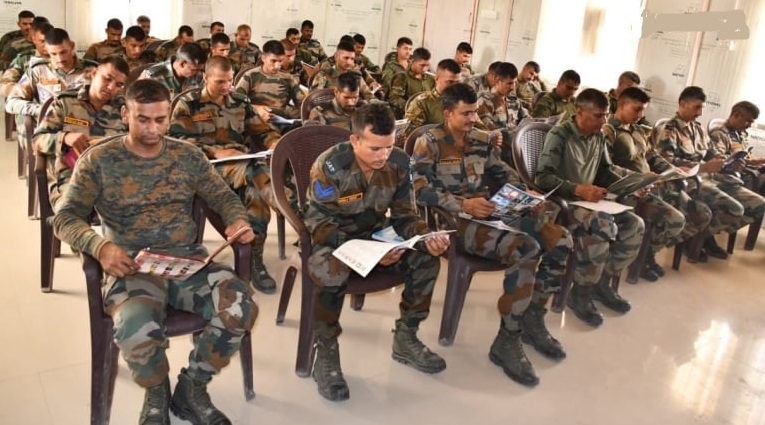 Agneepath Scheme replaced with Sainik Samman Scheme 2024, Defence Minister Rajnath Singh Relaunched Agniveer Scheme
Agneepath Scheme replaced with Sainik Samman Scheme 2024, Defence Minister Rajnath Singh Relaunched Agniveer Scheme
-
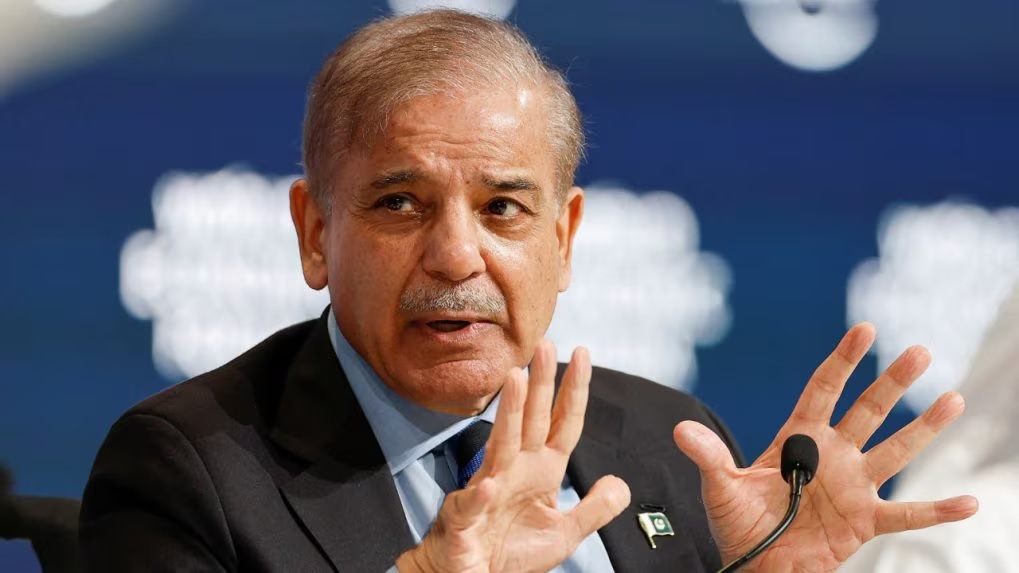 Pakistan Announces 15% Increase in Defence Budget for 2024-25 Amid Economic Crisis
Pakistan Announces 15% Increase in Defence Budget for 2024-25 Amid Economic Crisis
-
 China's Latest DF-31AG ICBM Test: A Strategic Leap in Global Missile Capabilities
China's Latest DF-31AG ICBM Test: A Strategic Leap in Global Missile Capabilities
-
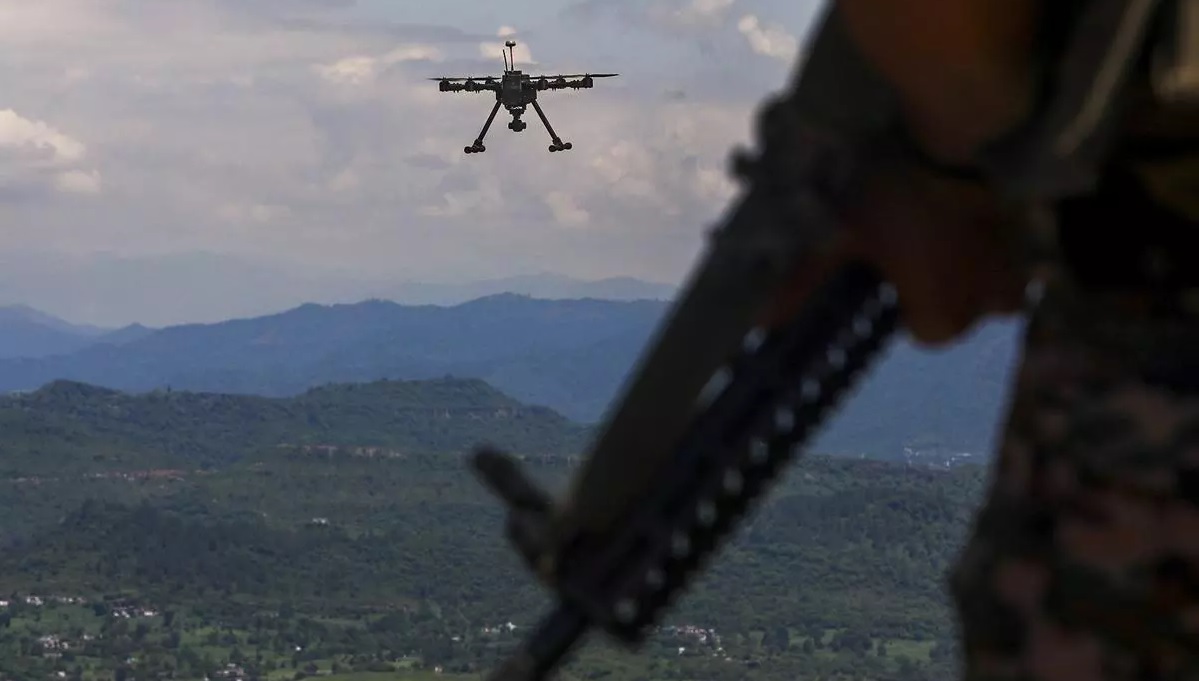 India's Defence Ministry Warns Against Chinese Parts in Military Drones Amid Security Concerns
India's Defence Ministry Warns Against Chinese Parts in Military Drones Amid Security Concerns
-
 China’s Super Radar Detects Mysterious Plasma Bubble Over Giza Pyramids
China’s Super Radar Detects Mysterious Plasma Bubble Over Giza Pyramids
-
 India's Indigenous Kaveri Engine Program with New Focus on Thrust and Performance
India's Indigenous Kaveri Engine Program with New Focus on Thrust and Performance
-
 Russian Scientists Develops Cancer Vaccine, will Distribute Free from 2025 in Russia
Russian Scientists Develops Cancer Vaccine, will Distribute Free from 2025 in Russia
-
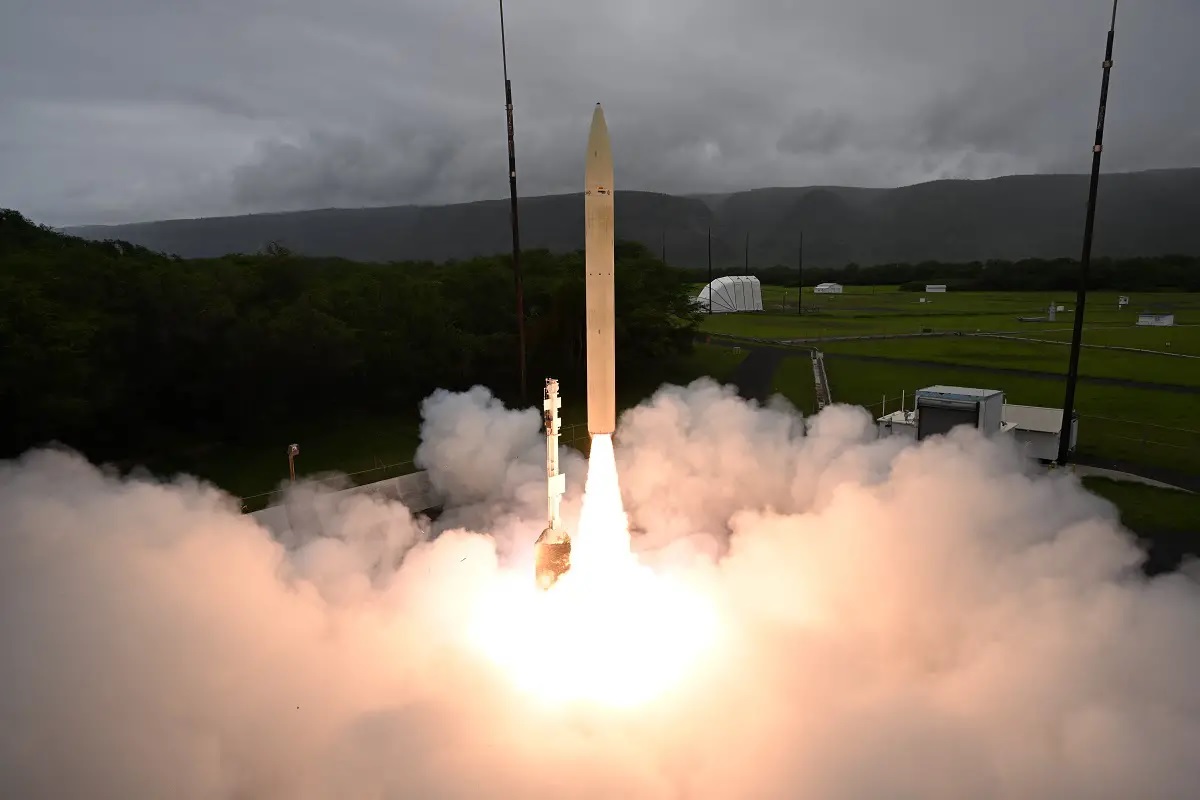 Successful Hypersonic Missile Test by U.S. Department of Defense
Successful Hypersonic Missile Test by U.S. Department of Defense
Top Trending in 4 Days
-
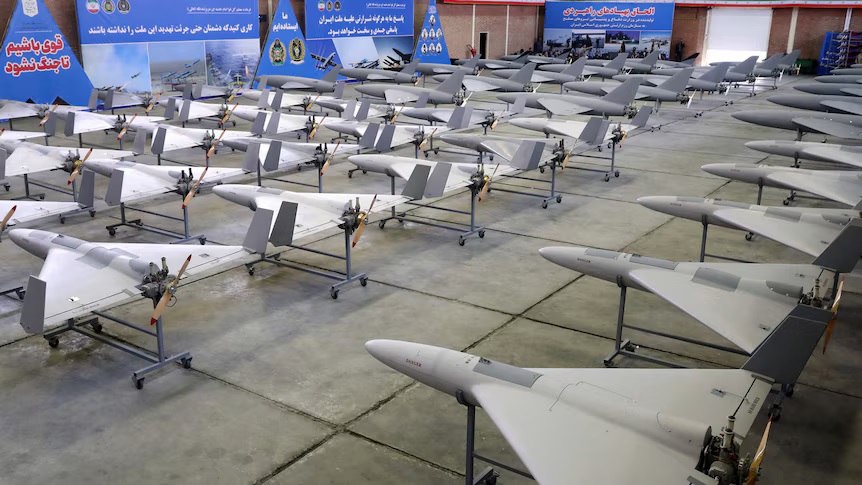 China’s Massive Kamikaze Drone Order Signals Strategic Military Expansion
China’s Massive Kamikaze Drone Order Signals Strategic Military Expansion
-
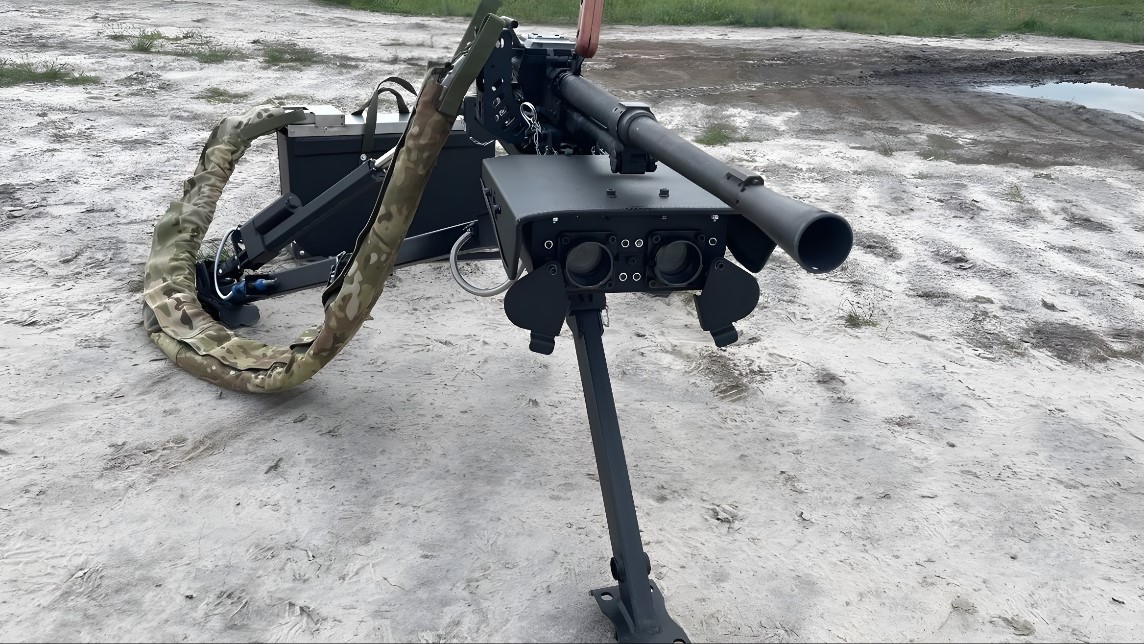 Robotic Wolly Turrets: Ukraine’s New Weapon Against Evolving Battlefield Threats
Robotic Wolly Turrets: Ukraine’s New Weapon Against Evolving Battlefield Threats
-
 Northrop Grumman Successfully Tests Advanced Solid Rocket Motor for U.S. Navy's Extended-Range Missiles
Northrop Grumman Successfully Tests Advanced Solid Rocket Motor for U.S. Navy's Extended-Range Missiles
-
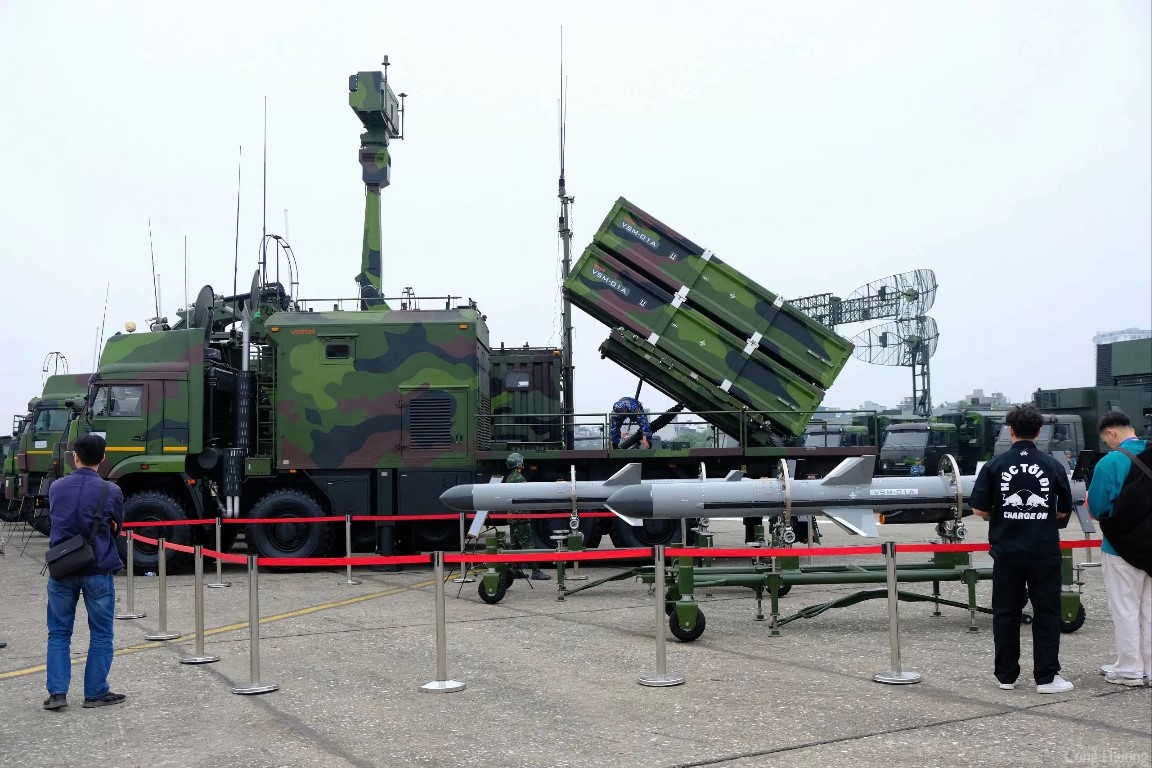 Vietnam Unveils VCS-01 Coastal Defense System: A Indigenous Missile Technology
Vietnam Unveils VCS-01 Coastal Defense System: A Indigenous Missile Technology
-
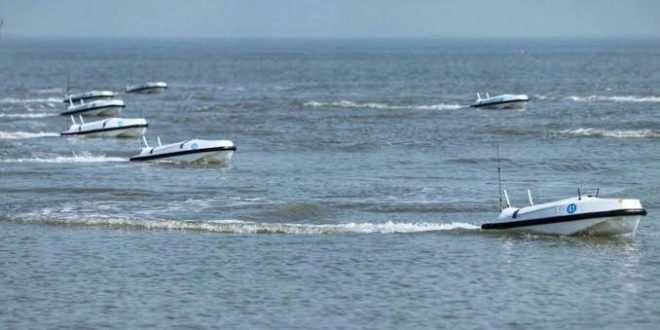 DARPA’s Breakthrough in Automated Fueling-at-Sea Technology for Unmanned Surface Vessels
DARPA’s Breakthrough in Automated Fueling-at-Sea Technology for Unmanned Surface Vessels
-
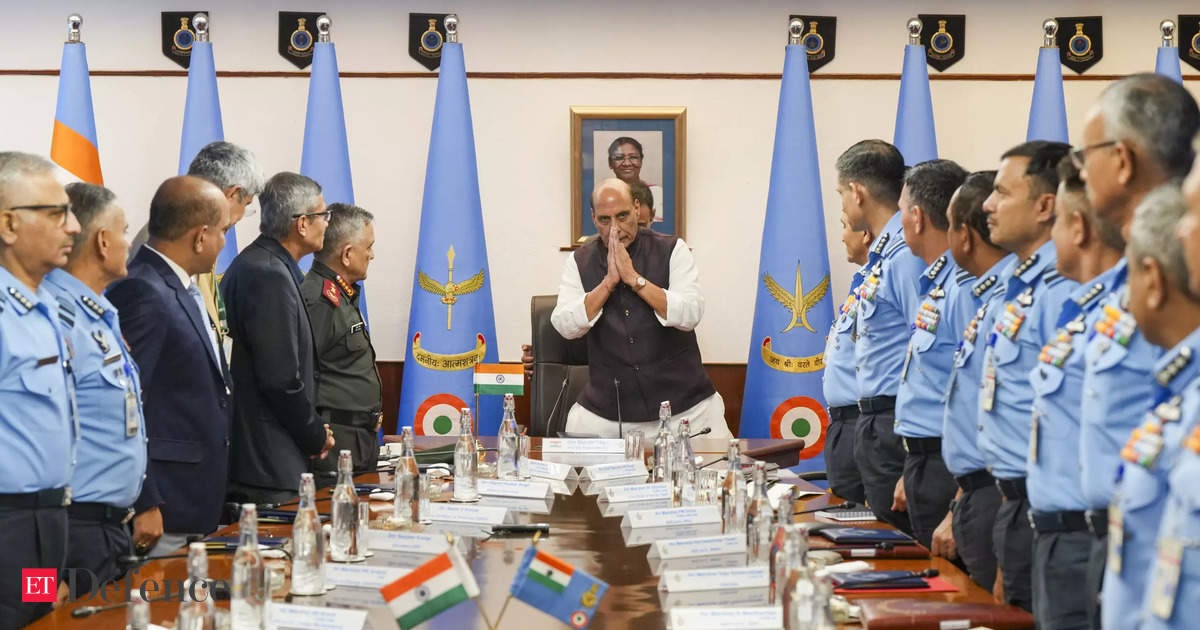 India Forms High-Level Committee to Bolster Indian Air Force’s Capability Amid Regional Challenges
India Forms High-Level Committee to Bolster Indian Air Force’s Capability Amid Regional Challenges
-
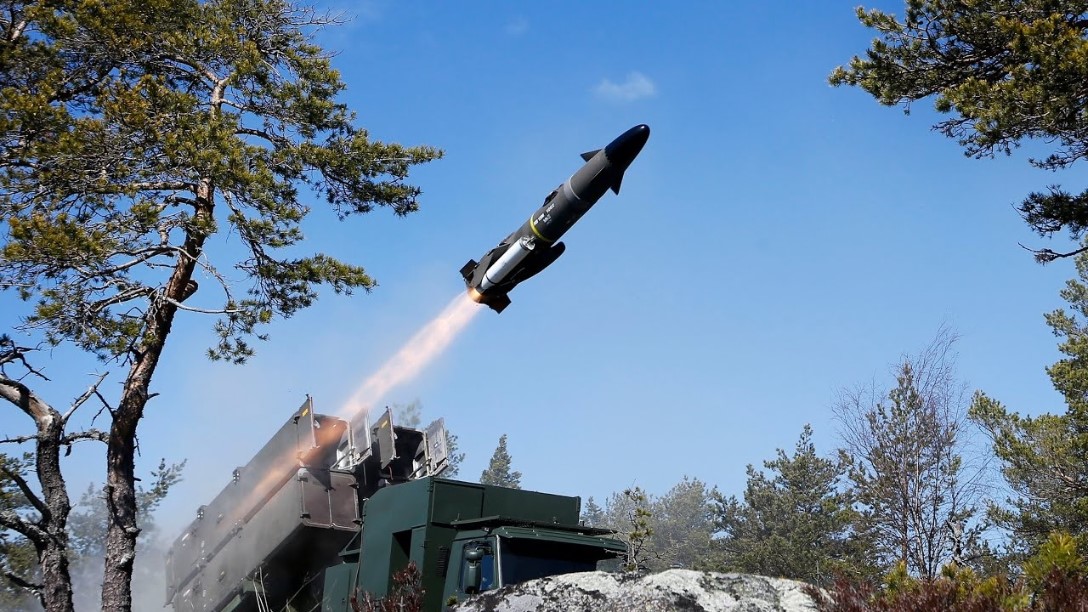 Saab Secures SEK 800 Million Contract to Upgrade Sweden’s Coastal Defence with RBS15 Mk3 Missiles
Saab Secures SEK 800 Million Contract to Upgrade Sweden’s Coastal Defence with RBS15 Mk3 Missiles
-
 Scientists Discover Mysterious RNA-Based 'Alien' Life Forms in the Human Body
Scientists Discover Mysterious RNA-Based 'Alien' Life Forms in the Human Body
